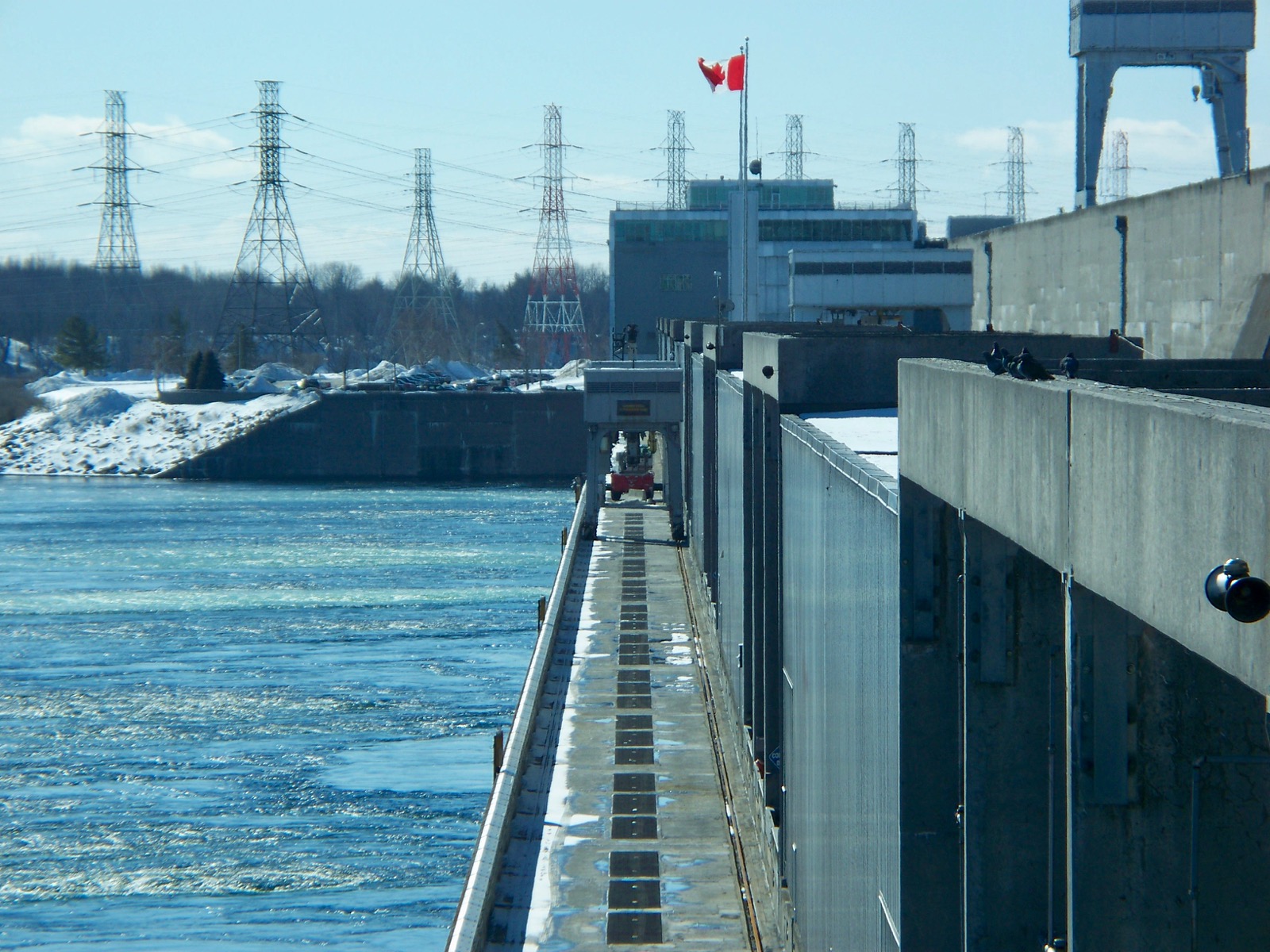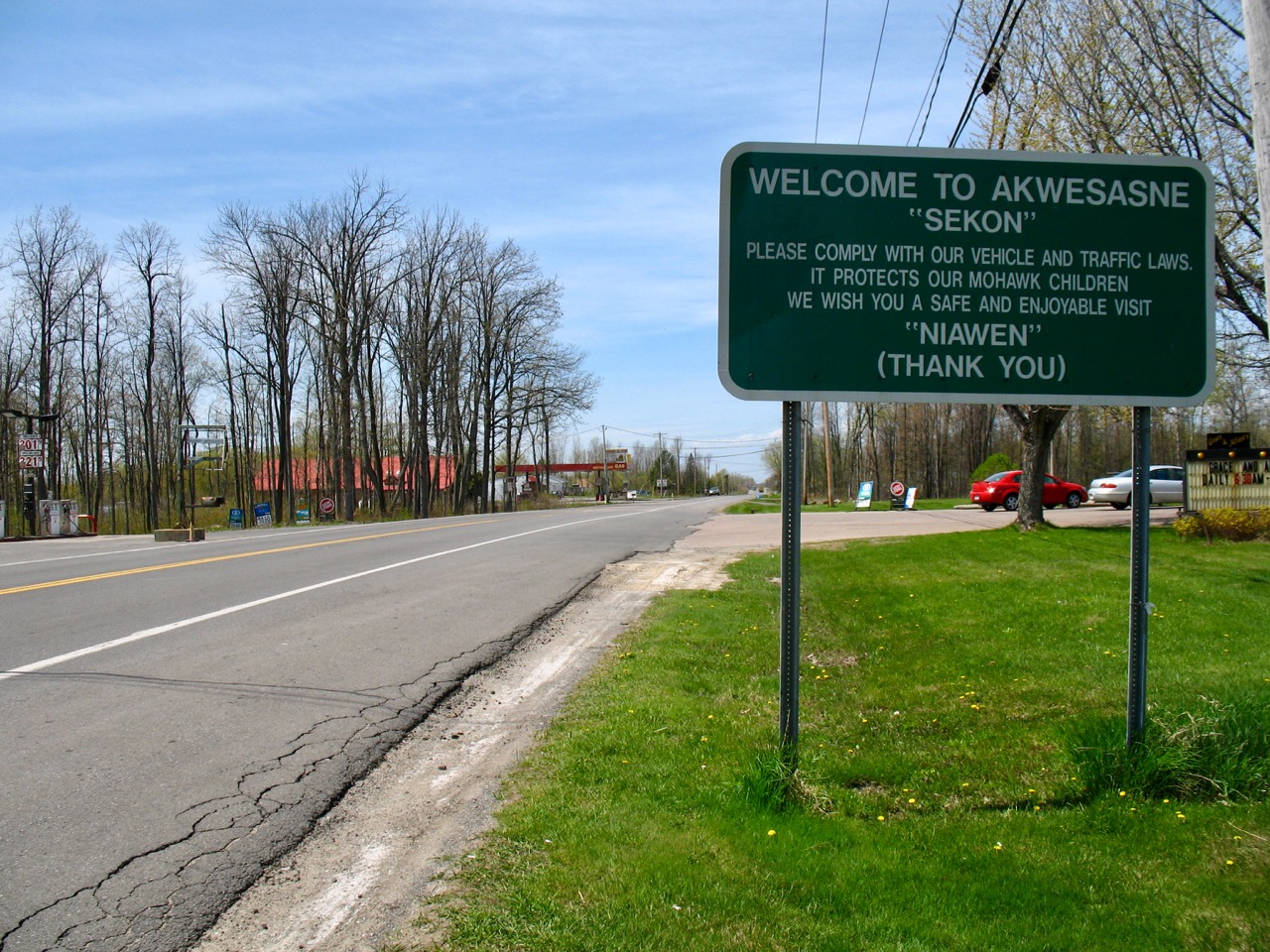Why Not Tax the Seaway?
By Doug George-Kanentiio
It has been an historical fact that the Mohawks assessed usage costs for those who used our resources whether for sustenance or for travel.
These would come in the form of furs or other goods which the Mohawks would exchange for products in Montreal or Albany. It was also expected that travelers would abide by Mohawk laws with regards to hunting and fishing, that they would not harvest more than they needed and would do no harm to the environment.
In this manner the Mohawks managed to keep areas such as the Adirondacks pristine and to insure the region would always have an abundance of forests, game animals and fish. When the Europeans first came into the region they cited the region as a hunter's paradise with elk, grizzly, caribou and in the souther section woodland buffalo. Those species are now gone, driven to area extinction by the avarice of the colonials who also used their iron-steel technology to strip millions of acres of indigenous forests.
After the American Revolution the Mohawks were expelled from the ancestral homes along the Mohawk River and through two notoriously fraudulent "treaties" lost most of the 9.9 million acres of land which once constituted the nation's homelands in what is now New York State. There is no land cession or "treaty" entered into by the lawful representatives of the Mohawk Nation which cedes any land to the Americans or the British.
Included in this are the islands to the west of Kawehnoke and the entire area called Dundee. We held outright title rather than "occupancy" based on Crown or U.S. federal trust status.
 The Moses-Saunders
Power Dam sits on Mohawk territory on both sides of the United States-Canada
border. Photo: ceedub13
The Moses-Saunders
Power Dam sits on Mohawk territory on both sides of the United States-Canada
border. Photo: ceedub13
But the Mohawks of Akwesasne, despite ongoing protests, were restricted to a tiny section, six miles square, of our former lands because of the duplicity of Louis Cook, Wiilliam Gray, Joseph Brant, John Deseronto, Thomas Williams and Goodstream. Despite these protests all the US wanted was signatures regardless of the standing of the person who signed.
Then, as now, just one person's name on a sheet of paper was sufficient for the Americans to take our land. Four years ago the St. Regis Tribe cited the signature of a single person from the Mohawk Nation Council as proof that the Nation gave the Tribe the right to unilaterally enter into a final land claims settlement with the US. As the Tribe argued the Nation's silence on subsequent negotiations was compliance.
This adversely effects opportunities to assert indigenous rights over areas which could provide a lucrative income for all of Akwesasne without conceding anything. By moving together the three councils at Akwesasne could easily secure no cost hydro electrical power for the entire community saving every family thousands of dollars in utility fees. Yet there is no plan to do so or if this is brought up it is dismissed as a fantasy. It is not.
There is another prime source of revenue glaringly obvious if the three councils have the imagination and courage to act in the best interests of the people.
In April, 1959 the lives of every Mohawk and the community was forever changed when the St. Lawrence Seaway came operative. I recall that event as a four year old, watching with amazement as the mighty river receded so low that one could walk far onto the bed and half way to St. Regis Island from our Kanatakon home. No one expected that a way of life was about to evaporate as the fishing grounds were destroyed, the waters stilled to become contaminated by the factories attracted here by cheap power coming from the
St. Lawrence Power Dam and virtually no environmental controls.
Cancers, diabetes, heart disease, obesity-
all can be directly traced to the Seaway.
Once the pollutants overwhelmed fishing and farming the traditional economy evaporated and the language, once so intimately tied to the natural world, faded. This in turn led to a breach among the generations as those who were adults in the 1950's questioned the relevancy of speaking Mohawk in an era where their children would be compelled to secure a living in a different reality, one where cash was the key to survival.
The Seaway took away land, destroyed the sandy beaches, killed the fish, displaced families. Some payments were made but the Seaway has never compensated the people for the immediate and long term effects of its actions. In 60 years the Seaway had never tendered to the Mohawk people anything for using our waters and damaging our eco-systems. Nor has any of the three councils moved to demand the Seaway do so. Such a condition in a place where the leadership bats around the word "sovereignty" as if it was a lacrosse ball without a stick is mystifying. No other jurisdiction would permit any vessel to intrude upon its waters without paying for doing so.
And what actually is carried through Akwesasne? i doubt anyone on any level at any territorial government level knows. This information can be obtained by examining the manifest of the 4,389 vessels which use our river. Much of that cargo is environmentally dangerous. And how much cargo is carried in these steamers? I checked and it was, in 2018, 42,000,000 US tons, an increase of 7.14% from 2017. With all of the technical and information abilities at the Tribe and MCA one would think the community would know basic information like what the Seaway charges these ships. The cost? $.1442 per ton with a minimal charge of $28.57 per ton to enter each lock with a 20% fee based on the total value of the cargo to go from Montreal to the Welland Canal. Add to this a charge of $1.744 per passenger for each lock and a fee of $30 for each pleasure craft for every lock.
And the financial status of the American based St. Lawrence Seaway Corporation? That entity, controlled by four non-Natives, has assets of $191,000,000 with an annual budget of $29,000,000. It was able to, in fiscal year 2017 able to bank a nice profit of $10,690,000. This can be affirmed by reading the
Corporation's financial report on seaway.dot.gov.
 Signs in Ontario, Canada,
point to the United States and the Mohawk territory at Akwesasne. Photo: Michel
Rathwell
Signs in Ontario, Canada,
point to the United States and the Mohawk territory at Akwesasne. Photo: Michel
Rathwell
In Canada the entity operating the Seaway in that jurisdiction is the
St. Lawrence Seaway Management Group with a board of eight all non-Native men. It reported that in 2018 it collected $78,000,000 in tolls with operating costs of $60,000,000 for a profit of $18,000,000. It will increase tolls by 1% this year. The CEO of the SSMG is Terence Bowles and he may be reached by calling 613-932-5170. His US counterpart is Craig Middlebrook, his number is 202-366-0091. The Massena manager is Thomas Lavigne and he may be reached by calling 315-764-325.
Ask them if any representative from any Mohawk entity has contacted them about applying a reasonable fee for using our resources, our islands, our waters in their lucrative activities. Ask them for information as to their plans to counter the ecological damages those ships cause our river and the islands or to pay reasonable compensation for the demonstrable harm the Seaway has brought to us.
At the very least the councils should assess a charge based on total tonnage even if it was $5 per ton. Then we would have a steady income and not have to make deals with shady energy companies.
There is a great opportunity here to secure revenues sufficient to guarantee a permanent income for every Akwesasnoron and enough left over to develop the economy and begin restoring the territory to its former condition. We do not need to turn on each other, to fight while those ships go right on by, ignorant of our distress and their part in sustaining factionalism.
An end to infighting is in sight if we can stand and see it beginning with the demanding what is ours by right from the Seaway.
Doug George-Kanentiio, Akwesasne Mohawk, is the vice-president of the
Hiawatha Institute for Indigenous Knowledge. He has served as a Trustee for the
National Museum of the American Indian, is a former land claims negotiator for
the Mohawk Nation and is the author of numerous books and articles about the
Mohawk people. He may be reached via e-mail at: Kanentiio@aol.com or by calling
315-415-7288.
Join the Conversation



